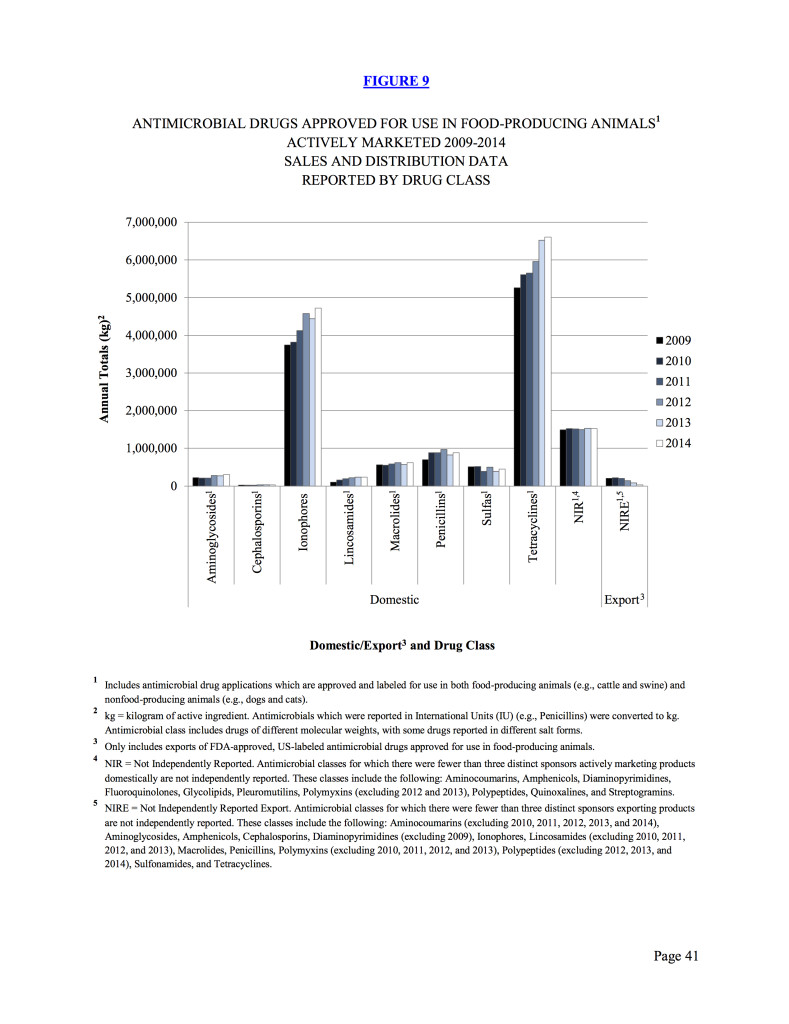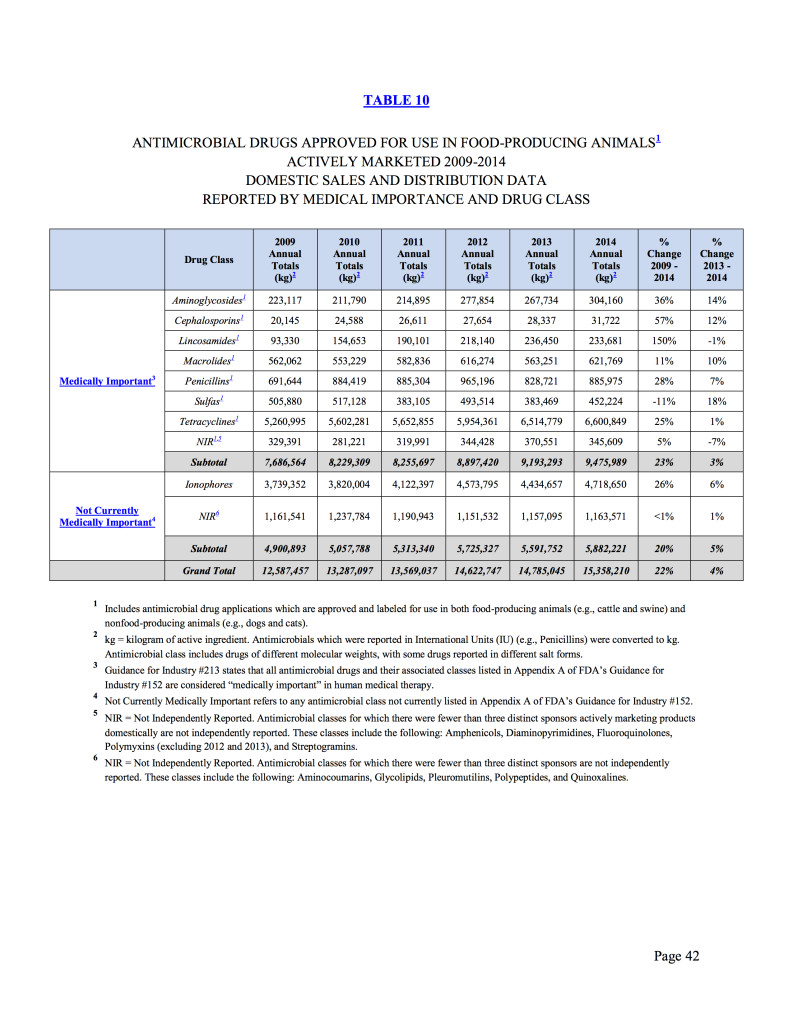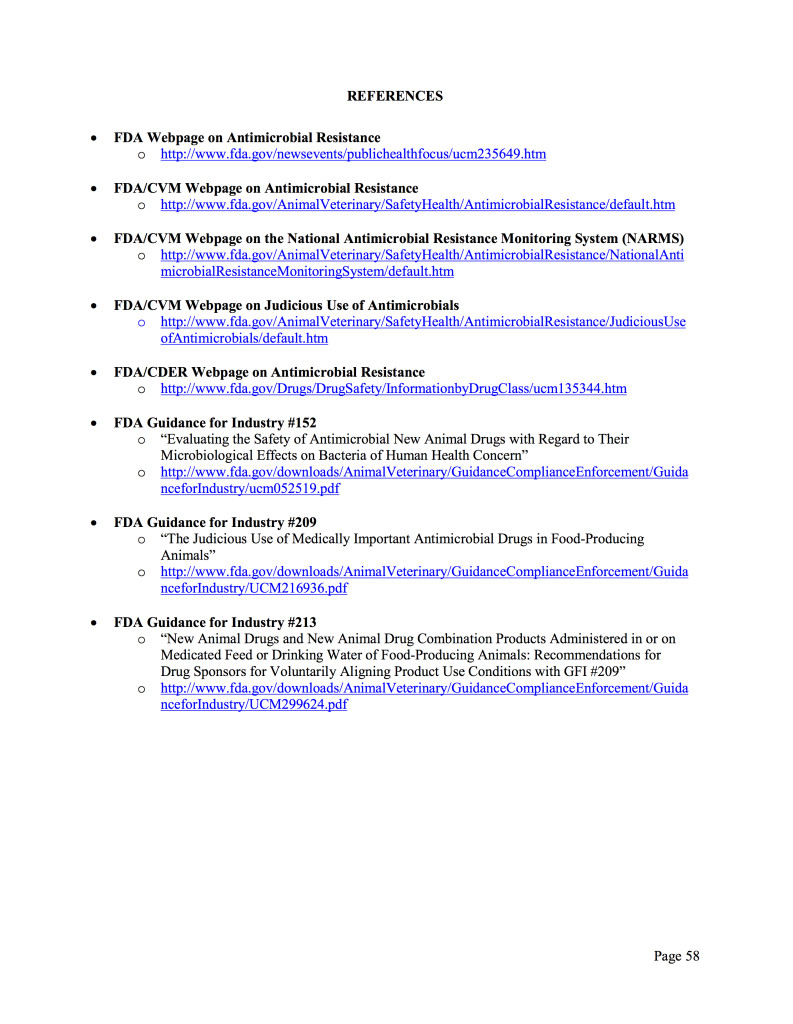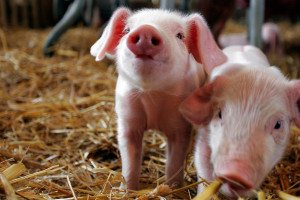In December 2015, the Center for Veterinary Medicine Protecting Human and Animal Health within the Food and Drug Administration, released a rather unremarkable sounding report entitled, ‘2014 Summary Report on Antimicrobials Sold or Distributed in Food-Producing Animals’ (a link to the full report in below in reading list). It is a large report outlining antimicrobial use in food-producing animals.
Key highlights of the report:
- Domestic sales and distribution of antimicrobials approved for use in food-producing animals increased by 22% from 2009 through 2014 (p.6)
- The use of ionophores (classed as a ‘non-medically important antimicrobial’ and used as a feed additive to increase weight gain in cattle) has increased by 26% (p.19)
- It’s widespread and legal to use antibiotics to increase weight gain in food-producing animals but ‘because of confidentiality constraints, FDA cannot provide sales and distribution data for products labeled solely for production indications.’ (p.19)
- Tetracyclines and ionophores account for the largest sales in volume by kg (p.41 see table below)
 5. Below is a nice table showing antimicrobial use in both food-producing animals (e.g. cattle and swine) and ‘non-food producing animals’ which is a funny way to define our pets like cats and dogs:
5. Below is a nice table showing antimicrobial use in both food-producing animals (e.g. cattle and swine) and ‘non-food producing animals’ which is a funny way to define our pets like cats and dogs: If you want to learn more the FDA’s reference section is a complete list of their writings on the topic:
If you want to learn more the FDA’s reference section is a complete list of their writings on the topic:

Read more:
- 2014 Summary Report on Antimicrobials Sold or Distributed in Food-Producing Animals 2014_Annual_Summary-12-2015
- Are Antibiotics Making People Larger? Overuse of the drugs seems to make us gain weight—even when we don’t take them. The Atlantic Dec 2015
- The prevalence of homeopathy in Europe. May 2015 C Zettl
- Homeopathy as a replacement to antibiotics in…piglets! July 2014 C Zettl

